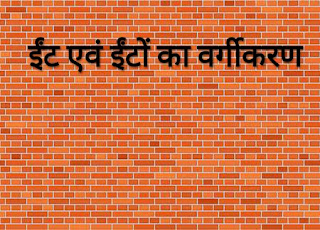TEMPLE ARCHITECTURE OF INDIA
Written by - Monu Dalal
Introduction to Indian Temple Architecture :-
The Hindu temple architecture developed over two to three thousand years ago. Religious thoughtfulness plays role in the architectural evolution of Indian temples. And the architects were also bounded themselves to keep ancient techniques of building temples. And this flow remaind over the period of time. Ornamentation and decoration of the temples resulted in an overwhelming riches of architectural elements. Features of Indian temple architecture has few analogues in the aesthetic manifestation.
According to Vastu Shastra temples are categorised into three different orders : - the Nagara or Northern style. - the Dravida or Southern style. - the Vesara or Mixed style.
In early years of temple architecture the most significant difference between northern and southern styles are gateways. The Shikhara in Nagara style is prominent component of temple. In Dravida, enclosure walls were built around the whole complex. The gateways are called Gopuram were set along east-west and north-south axes of these walls which led the devotees into the courtyard. The ground plan, stone carving on walls was nearly same in all types.
Examples :- - Nagara temple examples are Khajuraho group of temples, Sun temple, Konark surya temple, Gujarat and Orissan temple. - Dravidian temple examples are temple of Tanjore, Madurai, Mahabalipuram, Badami caves, Pattadakal and Kanchipuram temples.
Let's discuss architecture of all type of style temples in detail :
-- Nagara style temples
1. Khajuraho Temple - It was built by the Chandella rulers in 900 AD to 1100 AD. Features of Khajuraho temple are : having high terraces, unity of composition, architectural masterpieces like Shikhara and mandapa, vertical axis, kalasa on top.
2. Kandariya Mahadeva Temple - It is the largest temple in Khajuraho group of temples with 109x60ft, Shikhara height is 116.6ft, mandapa is 25x25ft. It has no enclosure walls. It becomes a composite design in plan and exterior profile. Their is a raised platform on which temple is located is the composition point. The sculptures are excellent.
-- Eastern style temples
1. Temples of Orissa - Under the name of Kalinga large number of temples were built in 300BC. Orissan temple architecture provides large variety of styles. These temples were architecturally designed in a democratic way. In Orissan temple architecture Indo Aryan style of architecture may be seen at its best and purest. This style consists of three different types of temples namely Rekha Deula, Pidha Deula, Khakhara Deula. Deula is a local word means temple.
The temple movement in Orissa reached its peak of excellence in 10th century. Generally all Orissan temples follows a common structure plan. The temple consists two apartments are cubical and square. Bhubaneswar capital of Orissa is known as the temple town city. Bhubaneswar was created Yayati founder of Kesari dynasty.
2. Sun Temple, Konark - This temple is the greatest achievement in Orissan architecture. This temple conceived as the eternal sun god travelling in ratha on high plinth. It has 12 number of 10ft diameter wheel, drawn by 7 horses. Entry havs wide steps in east, temple is full of sculptures of erotic nature. The temple stands in the centre of a large enclosure 860ft x 540ft. Stone used for construction is good quality laterite stone.
-- Dravidian Style Temples
1. Hoysala style - This temple architecture style developed after the merging of Dravidian and North Indian style. Plan is composed of numerous cellas or grabha grihas served by a common mandapa. These cellas plan was a star. The plan is made up of a grid of rotating square. Mandapa remained square though it was not distinguished by circular columns. For e.g. Somnathpur Temple.
2. Rock cut style Temples - Pallavas introduced rock cut style of temple architecture. Earliest examples of rock cut style are from 600CE to 900CE. There were excavated pillared halls and shrines known as rathas. Mostly temple of rock cut style dedicated to Shiva. Kailashnath at Kanchipuram, Shore temple in Mahendravadi and temple at Mahabalipuram are fine examples of Pallava style.













Thank you
ReplyDelete